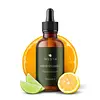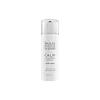What's inside
What's inside
 Key Ingredients
Key Ingredients

 Benefits
Benefits

 Ingredients Side-by-side
Ingredients Side-by-side

Water
Skin ConditioningGlycerin
HumectantHyaluronic Acid
HumectantBeta-Glucan
Skin ConditioningSea Whip Extract
Skin ConditioningSodium Hyaluronate
HumectantCeramide NP
Skin ConditioningCeramide AP
Skin ConditioningCeramide EOP
Skin ConditioningCholesterol
EmollientGlycyrrhiza Glabra Root Extract
BleachingEpilobium Angustifolium Flower/Leaf/Stem Extract
Skin ConditioningPhytosphingosine
Skin ConditioningSodium Cocoyl Amino Acids
CleansingChrysanthemum Parthenium Flower Extract
Skin ConditioningGlycine Soja Seed Extract
Skin ConditioningUbiquinone
AntioxidantSodium Lauroyl Lactylate
EmulsifyingCaprylic/Capric Triglyceride
MaskingMagnesium Aspartate
Skin ConditioningPotassium Aspartate
Skin ConditioningSarcosine
Skin ConditioningXanthan Gum
EmulsifyingCarbomer
Emulsion StabilisingPolysorbate 20
EmulsifyingPEG/PPG-14/4 Dimethicone
EmulsifyingDisodium EDTA
Ethylhexylglycerin
Skin ConditioningPhenoxyethanol
PreservativeWater, Glycerin, Hyaluronic Acid, Beta-Glucan, Sea Whip Extract, Sodium Hyaluronate, Ceramide NP, Ceramide AP, Ceramide EOP, Cholesterol, Glycyrrhiza Glabra Root Extract, Epilobium Angustifolium Flower/Leaf/Stem Extract, Phytosphingosine, Sodium Cocoyl Amino Acids, Chrysanthemum Parthenium Flower Extract, Glycine Soja Seed Extract, Ubiquinone, Sodium Lauroyl Lactylate, Caprylic/Capric Triglyceride, Magnesium Aspartate, Potassium Aspartate, Sarcosine, Xanthan Gum, Carbomer, Polysorbate 20, PEG/PPG-14/4 Dimethicone, Disodium EDTA, Ethylhexylglycerin, Phenoxyethanol
 Reviews
Reviews

Ingredients Explained
These ingredients are found in both products.
Ingredients higher up in an ingredient list are typically present in a larger amount.
Ethylhexylglycerin (we can't pronounce this either) is commonly used as a preservative and skin softener. It is derived from glyceryl.
You might see Ethylhexylglycerin often paired with other preservatives such as phenoxyethanol. Ethylhexylglycerin has been found to increase the effectiveness of these other preservatives.
Hyaluronic acid is naturally found in healthy skin. It is a humectant, meaning it draws moisture to your skin.
This ingredient helps hydrate, soothe, and protect the skin.
What makes hyaluronic acid so hydrating? It has the capacity to bind or hold large amounts of water.
Fun fact: It is already naturally found in our bodies, such as the fluids of our eyes and our joints.
Studies find this ingredient to have anti-inflammatory and anti-microbial properties. This can help speed up wound-healing.
Hyaluronic acid can be irritating if the molecule has a low-molecular weight, or if the molecules are small.
One study found low-molecular weight hyaluronic acid to be pro-inflammatory, meaning some people may experience irritation. This is because our bodies use hyaluronic acid in the wound-healing process to signal to our bodies, via irritation, that something needs healing.
The same study found high-molecular weight hyaluronic acid to be anti-inflammatory.
These are some other common types of Hyaluronic Acid:
Learn more about Hyaluronic AcidPhenoxyethanol is a preservative that has germicide, antimicrobial, and aromatic properties. Studies show that phenoxyethanol can prevent microbial growth. By itself, it has a scent that is similar to that of a rose.
It's often used in formulations along with Caprylyl Glycol to preserve the shelf life of products.
Water. It's the most common cosmetic ingredient of all. You'll usually see it at the top of ingredient lists, meaning that it makes up the largest part of the product.
So why is it so popular? Water most often acts as a solvent - this means that it helps dissolve other ingredients into the formulation.
You'll also recognize water as that liquid we all need to stay alive. If you see this, drink a glass of water. Stay hydrated!
Learn more about WaterXanthan gum is used as a stabilizer and thickener within cosmetic products. It helps give products a sticky, thick feeling - preventing them from being too runny.
On the technical side of things, xanthan gum is a polysaccharide - a combination consisting of multiple sugar molecules bonded together.
Xanthan gum is a pretty common and great ingredient. It is a natural, non-toxic, non-irritating ingredient that is also commonly used in food products.
Learn more about Xanthan Gum